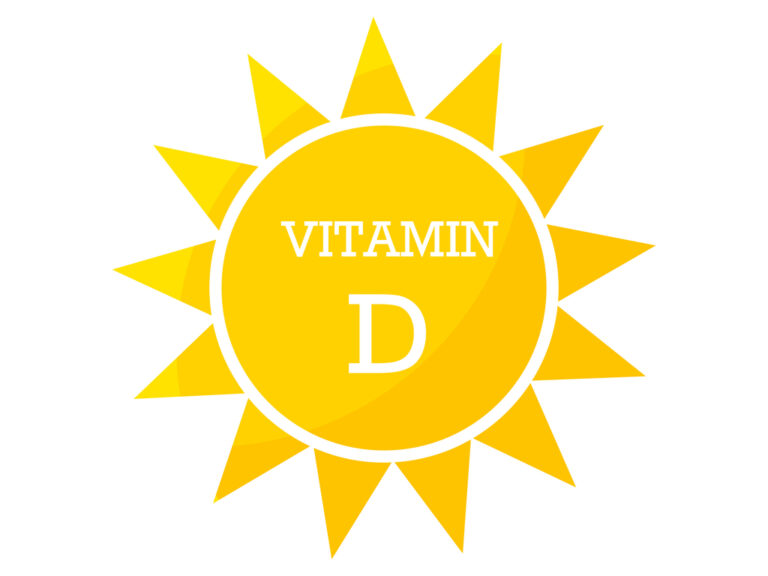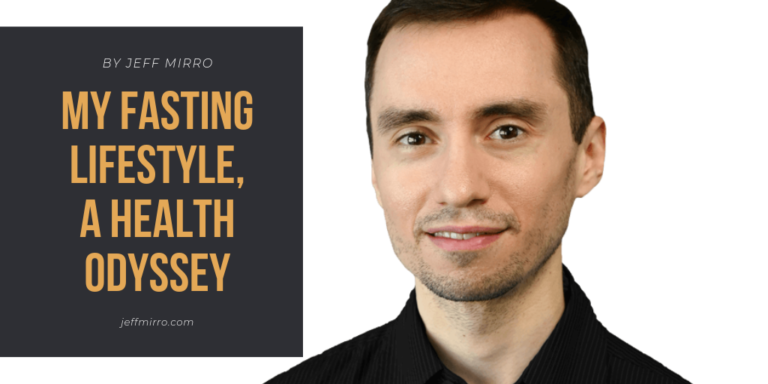Dry fasting is the miracle cure you’ve been looking for. It works for virtually everything, including weight loss. But what is dry fasting exactly, how is it done, and what are the specific benefits?
Dry fasting is
When most people think of fasting, images of someone purposefully abstaining from eating for a certain time period come to mind. Many also know what water fasting is; this is solely removing food from a person’s diet and only drinking water or, in some cases, coffee or tea. However, a term that is less known is dry fasting. This is just what it sounds like: fasting, but in a dry form, so without any liquids. It’s the complete opposite of how many go through the fasting process, which is avoiding food but drinking significant amounts of water and similar beverages. However, dry fasting benefits, especially as they relate to detoxification, are said to be three times as significant as those related to other types of fasting. A 24 hour dry fast is thought to be about as powerful as 72-hour water fast.
The Primary Concern with Dry Fasting
Of course, the immediate thought that comes to mind for many when they hear of this type of fasting is a fear of dehydration. A person can go quite a long time without eating; some, including Mahatma Gandhi, have gone weeks without food. However, water is a different story altogether. More than half of our body is made up of water, and every part of it needs water to continue functioning. For those reasons, the amount of time that a person can go without ingesting any liquids is several days, maybe a little more than a week, although there are many reports of people going much longer than this.
However, that shouldn’t be a concern as dry fasting is not something that is usually done for many days at a time. You can experience many of the healing effects through intermittent dry fasting with no more than several hours of a liquid-free diet occurring at any one time. Conversely, engaging in 100 percent dry fasting for more than 48 consecutive hours is not recommended for beginners.
Millions Do It
Although many may think of dry fasting as something extreme, it really isn’t. In fact, it’s a part of many religions, and millions engage in it on a regular basis for religious reasons. For example, during the month of Ramadan, Muslims do not consume any food or water during daylight hours. Other religious examples of dry fasting include Jews during Yom Kippur and Mormons on one Sunday of every month.
Note that those engaging in fasts on Sundays or on Yom Kippur may engage in it for 24 hours, but they don’t go beyond that point and it’s only for a single 24-hour period, so side effects are minimal as a result. However, do note that minor side effects can result from dry fasts lasting that long, such as temporary headaches. At the same time, those who are already prone to headaches may want to reconsider whether or not to do a dry fast. Also, dry fasts may be difficult to undergo for those who are dependent on caffeinated coffee and tea, and people with glaucoma, cataracts, or dry eye syndrome may see those symptoms exacerbated by a dry fast experience.
Autophagy through Dry Fasting
One of the most significant benefits of dry fasting is reaching the point of autophagy, a word that translates as self-eating. However, don’t be concerned, as this is a good thing! It’s at this time when cells enter the repairing mode and start to heal themselves. This has been done throughout human history during times when we’ve needed to increase our energy levels, battle infections or otherwise repair damage to the body. In other words, autophagy is the body’s way of getting rid of toxic materials and cleaning itself up. In fact, dry fasting is one of the best ways to speed up the process of getting to and engaging in the autophagy stage.
Fat Burning
Limiting how many fluids you take in also results in more fat being burned. This is because once the available stores of water are gone, your body will turn to fat and burn that off to produce metabolic water. In fact, the body produces about 108 grams of water for every 100 grams of fat, an especially impressive number when you consider that it can only make 60 grams of water from that amount of carbohydrates and 42 grams of water from 100 grams of protein. As a result, fat is one of the most efficient sources of water that we have access to.
Of course, none of this would be possible on a water fast as the body would then already have all of the water that it needs.
Inflammation Decrease
People who take part in dry fasting have also reported significantly lower levels of inflammation, which helps prevent and lessen the chances of diseases such as Alzheimer’s disease, cancer, and psoriasis developing.
Glucose Reduction
Dry fasts have also been shown to regulate blood sugar by decreasing blood glucose levels, which can have a beneficial impact on diabetes as those who engage in dry fasts tend to have lower rates of diabetes.
Brain Health
One of the most impressive dry fasting benefits is the increase of the levels of neurotrophins in the brain, proteins that help neurons survive and grow. As a result, the brain’s ability to learn and remember things improves.
Bone Enhancement
Another positive result of dry fasting is the increase of parathyroid hormones, which are molecules that are vital for the health and strength of bones. This is partially due to the increase in calcium levels that results.
Combine With a Ketogenic Diet?
Since fat can be converted to water so easily, many combine an intermittent dry fast with a ketogenic diet, which is a very low-carb diet that is focused on consuming about 75 percent fat to go with 20 percent protein and 5 percent carbohydrates. The purpose of this diet is to cause the body to burn ketones, which fat produces, as opposed to the glucose that is primarily provided by diets that are more focused on carbohydrates.
The main benefit of combining a high-fat diet with an intermittent dry fast is experiencing minimal discomfort. High-fat diets naturally cause you to experience less hunger and less thirst, which is true whether or not you’re fasting as those who eat more fat tend to drink less water while people who consume foods that are higher in fiber or caffeine content tend to naturally crave water more often.
It should also be noted that eating high-fat diets while engaging in a dry fast results in a decrease in glucose levels and diastolic and systolic blood pressures. Additionally, brain function tends to improve as fasting makes the blood-brain barrier more permeable and receptive to ketones.
Lipid Balancing
As a result of dry fasting, many types of cholesterol and triglycerides decreased while HDL cholesterol levels – HDL is known as the “good” kind of cholesterol – increased in women.
But note that the types of fats that are consumed may play a significant role. It’s believed that the positive effects on cholesterol levels occurred much more strongly in those people whose diets were focused on polyunsaturated and monounsaturated fatty acids
*Please note that despite the evidence above, I recommend more meat and saturated fat in the diet, and less foods high in Omega 6 fatty acids such as nuts and legumes.
Blood Pressure Reduction
Those who engage in dry fasts have been shown to have lower blood pressure levels. In fact, it’s believed that these effects are accentuated when dry fasting is combined with a ketogenic diet, although a positive impact on blood pressure has been shown regardless of the diet that has been engaged in.
Dry fasting has also resulted in lower rates of coronary heart disease.
Weight Loss?
Although you will generally lose weight while engaging in a dry fast, this is can sometimes be a misleading result. That’s due to the weight that has been lost generally not being a significant amount, and it tends to return after the fasting period has ended anyway. This is because so much of our total weight is water weight, so taking part in a short dry fast will naturally result in a lower overall weight until those liquids are reintroduced into your system. The same can be said for the fewer calories that you consume during this time; weight-loss results for that reason will be temporary too.
But as stated earlier in this post, fat loss will be more noticeable, and more significant, permanent weight loss will certainly occur when you are able to do
Types of Intermittent Dry Fasting
Although the options are nearly limitless as far as how you plan your own intermittent dry fasting process, many initially consider two options and then go from there after experiencing the results. The most common type is the 16/8 method, which consists of consuming food and drink during an eight-hour period out of every 24 and fasting for the other 16. A less common method but one that many do utilize is 20/4, which involves limiting eating and drinking to just a four-hour period out of every 24-hour span. You can also do other variations of this, such as an 18/6 or 17/7. It’s debatable at which the point autophagy actually kicks in, but it seems to be at about the
Also, many people, including the aforementioned Cole Robinson, who is the inspiration for this blog, eat one meal a day, also referred to as OMAD. This is basically a 23 hour a day fast where you eat all of your calories in a super tight one-hour eating window. The benefits of the OMAD lifestyle by itself are
There’s also a number of people who will eat breakfast and drink liquids early in the morning before refraining from both activities until dinner time. There are benefits to this eating schedule as well, but the downfall is your actual fasting time is greatly reduced and autophagy never really has a chance to kick in if you’re eating dinner and then breakfast early in the morning, even if it’s around 12 hours later.
Some will engage in an absolute dry fast (also called a hard dry fast) during these times, during which they will refrain from having any and all contact with water. In other words, activities such as swimming or showering would be avoided. However, as long as no water is being ingested during these times, there’s generally no reason to refrain from those activities. Conversely, it should be noted that this is not an opinion that everyone shares as many do want to avoid even the skin’s pores from being able to experience any contact with liquids during this time.
Ease Into Dry Fasting
Do take care when undergoing an intermittent dry fast. You will want to have had experience with other types of fasts before taking this on as it’s a more advanced fasting method than the others. A couple of ways to ease into a dry fast is by first engaging in a juice fast or a raw diet. Another option is to initially start by having a dry fast one day a week before extending that to two, three, and so on. You could also engage in a day of eating and drinking that is normal for you and then have a day of dry fasting but then gradually increase the number of consecutive days of dry fasting that you engage in as compared to your more normal days, so that the ratio increases to 2:1, 3:1 and so on.
If you consume a lot of caffeinated coffee or tea and still want to embark on a dry fast, you should consider gradually decreasing how much of that you take in during the days and weeks leading up to your dry fast so that your body is not shocked when you start going without caffeine for long periods of the day. I recommend eventually cutting out caffeine from all sources altogether.
Also, consult with your doctor if you’re taking any medications as doing so combined with fasting could cause some issues.
Additionally, in the initial days of your dry fast, pay close attention to your body. Fortunately, you should be experiencing the positive effects in a pretty quick manner, but you also want to keep a lookout for any negative effects and, if you experience any, make necessary adjustments, including considering putting an end to the dry fast to reassess the situation.
Be Wary When Exercising as You Are Dry Fasting
Excessive sweating can result in a disruption to the body’s ability to maintain a water balance, so you want to be careful when exercising during this period and be especially wary of increasing the amount or intensity of your workouts during this time. Not only are you more apt to be dehydrated, but you might faint as well.
After the Dry Fast is Over
Be careful of how much you eat after it ends as it can feel natural to overeat. Notably, if you’ve combined your dry fast with a ketogenic diet, you may be tempted to consume too many high-carbohydrate foods at this time. As a result, you’re more likely to experience painful stomach aches, bloating issues, and rapid weight gain.
So if you have fat to burn off or a health issue to solve, and you’re looking for one of, if not the most powerful natural healing methods in the world, I recommend you try intermittent dry fasting. As I said above, ease into it, be careful, especially during your first dry fast, and pay attention to the signals your body is giving you.
But it should be noted that many seemingly bad side effects could actually be the Herxheimer reaction, meaning the healing effect (healing crisis) or detox effect of the fast. You may still want to stop the fast if the negative effects are too strong for you, and do a proper refeed with a small meal. Then you can eat normally for a day or two and try the fast again.
Your body will become more and more adept at handling fasts and you will be able to
Continue to follow my blog for more information on intermittent dry fasting and fasting in general.




